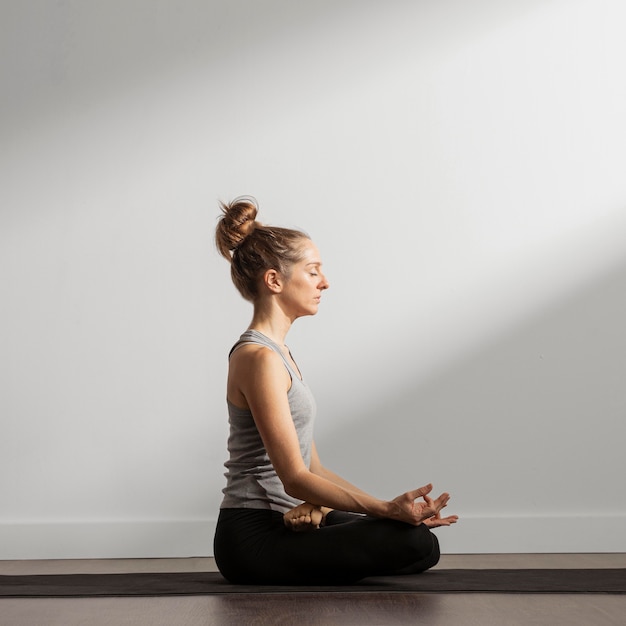
A yoga body isn’t just about flexible limbs. The ancient practice can also improve memory, heart, and bone health, explains Anna Magee.
Britain has become obsessed with yoga, spending an impressive £790 million a year on classes and mats. While yoga trends get increasingly unique—think paddle-board poses, naked yoga, and dog yoga—the real benefits are also gaining recognition through scientific studies.
Researchers at UCLA discovered that a three-month course of yoga and meditation was more effective than traditional memory exercises in reducing age-related brain impairment. Another study found it improved sleep in breast cancer survivors.
When Lucy Edge, a 53-year-old former advertising executive, experienced deep depression, she turned to yoga instead of taking prescribed anti-depressants. She traveled to India to learn yoga and, while she didn’t achieve a yoga goddess body, she returned home feeling happier and more content. Edge has since written three books about yoga and started Yoga Meds, a section on her website that lists over 300 clinical trials highlighting yoga’s benefits for various conditions, from arthritis to insomnia.
So, how can yoga benefit your health, and how do you get started? Consider trading crossword puzzles for warrior poses. In a UCLA study involving adults over 55, 12 weeks of yoga and meditation showed not only improvements in spatial and visual memory but also reductions in depression, anxiety, and stress. Although the study was small, it suggests broader research into yoga’s benefits for maintaining heart and brain health as we age.
Try starting with Kundalini yoga, which involves gentle poses, breathing techniques, meditation, and chanting. Participants in the study practiced Kundalini yoga for an hour each week and did 20 minutes of Kirtan Kriya—a form of meditation with chanting, hand movements, and light visualization—daily.
Yoga isn’t just good for mental health; it’s great for the heart too. A 2014 review published in the European Journal of Preventative Cardiology indicated that yoga might lower heart disease risk as effectively as brisk walking. Yoga helps reduce stress hormones that contribute to high blood pressure and heart rate, which are primary factors for heart disease.
To reduce stress, try gentle yoga poses or Restorative yoga, where postures are supported with bolsters and cushions. This type of yoga can significantly benefit your nervous system and lower stress levels.
Yoga is also effective for managing back pain. Musculoskeletal physiotherapist and yoga teacher Sarah Shone developed yoga classes for a Primary Care Trust rehabilitation program, and 87% of participants reported reduced pain. National guidelines recommend yoga for lower back pain, and Shone is now training more physiotherapists to incorporate yoga into their treatment plans.
Yoga can even help with incontinence by targeting pelvic floor muscles and increasing bone density through weight-bearing poses. If you’re new to yoga, inform your teacher about any health problems and start with gentle styles like Hatha or Iyengar. If you have specific conditions like back pain, consult your doctor to see if subsidized yoga classes are available through exercise referral schemes.
Choosing the right yoga mat can also enhance your practice. Consider where you’ll use the mat and how portable it needs to be. For taller individuals, longer mats are available. A thicker mat is beneficial if you experience knee or wrist pain.
Healthista recommends the Elephant Cork Yoga mat from Valka Yoga. Priced at £69.95, this eco-friendly mat is made from organic cork and natural rubber, and it is recyclable. It’s 3mm thick, providing padding and comfort for your joints. Cork material becomes grippier with sweat and is naturally antimicrobial and odor-resistant. The mat comes with a carry strap and offers a one-year warranty.
Yoga props like cork blocks can help beginners achieve difficult poses by adding extra length and providing stability. If you’re new to yoga, try styles like Yin or Restorative classes, often done with props under candlelight, or Vinyasa Flow for an energetic practice. Iyengar is great for understanding alignment and uses props, while Anusara provides flowing movements to upbeat music. Yoga Therapy is specifically tailored for injury or illness recovery.
Lucy Edge’s latest book, “Down Dog Billionaire,” is available now.